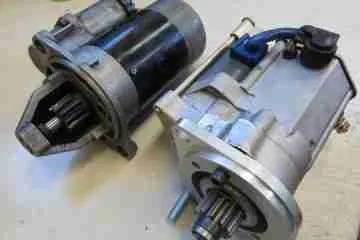Save Money by Changing the Spark Plug in Your 2015 Honda Civic

Save Money by Changing the Spark Plug in Your 2015 Honda Civic
Why Change Your Honda Civic’s Spark Plugs?
If your Honda Civic has been running rough lately or the gas mileage has dropped, it’s probably time for new spark plugs. Spark plugs are crucial to proper engine performance, igniting the air-fuel mixture in the cylinders. After 30,000 to 100,000 miles, spark plugs start to deteriorate and lose efficiency. Replacing them yourself can save you at least $150 compared to having a shop do it.
What You’ll Need
- A socket wrench set
- Spark plug socket (typically 5/8 inch for most Hondas)
- Gap tool
- New Denso or NGK spark plugs (check your owner’s manual for the right type)
Instructions
- Locate the spark plugs under the ignition coils on the sides of the engine. On the 2015 Civic, they’ll be on the front sides of the engine, near the valve cover.
- Remove the ignition coils by unclipping the wire harness and unscrewing the single bolt holding each coil in place. Pull coils straight out.
- Put the spark plug socket over the first spark plug and turn counterclockwise to loosen. Remove the plug.
- Check the new plug’s gap with the gap tool to ensure it’s 0.043 to 0.047 inches. Adjust if needed.
- Install new spark plug and hand-tighten. Then tighten another 1/2 to 2/3 turn with the socket wrench. Repeat for remaining plugs.
- Reinstall ignition coils, plug in wire harnesses and you’re done. Start the engine and listen for any knocking or pinging sounds. If all is well, you just saved a good chunk of change! Regular tune-ups are key to keeping your Civic running its best.
When to Change the Spark Plugs in a 2015 Honda Civic
If your Civic is due for a tune-up, it’s probably time to replace the spark plugs. For a 2015 Honda Civic, new spark plugs are typically needed around 60,000 miles. Replacing them yourself can save you at least $150 in labor costs at a shop.
When your spark plugs need replacement
There are a few signs that your Civic’s spark plugs have seen better days and need replacement:
- Your Civic is harder to start or runs rough at idle. The spark plugs ignite the fuel and air in the engine, so worn out plugs can’t do their job efficiently.
- You’re getting poor gas mileage. Faulty spark plugs disrupt the engine’s timing and fuel combustion, reducing performance and efficiency.
- The engine is misfiring or stalling. Weak sparks can’t properly ignite the fuel-air mixture, causing the engine to sputter, stall or misfire.
Replacing the spark plugs yourself in a 2015 Civic is totally doable for the average owner with some basic mechanical skills. You’ll need to remove parts like the air filter housing and ignition coils to access the spark plugs, so make sure to allot 3-4 hours for the whole job the first time. But once you get the hang of it, replacing the spark plugs can become a quick, money-saving DIY task to keep your Civic running like new.
With a tune-up and fresh spark plugs, your 2015 Honda Civic will be back to delivering the performance and efficiency you’ve come to expect. The few hours of your time is well worth it to avoid pricey repair bills down the road.
What You’ll Need to Change Honda Civic Spark Plugs
To change the spark plugs in your 2015 Honda Civic, you’ll need a few basic tools and parts:
Socket wrench and spark plug socket
You’ll need a socket wrench to remove the old spark plugs and install the new ones. Get a spark plug socket designed specifically for removing and installing spark plugs—it will have a rubber insert to grip the spark plug. For a 2015 Civic, you’ll want a 5/8-inch spark plug socket.
New spark plugs
Purchase a set of new spark plugs that match your Civic’s engine specifications. For a 2015 Civic with a 1.8L or 2.0L 4-cylinder engine, you’ll want NGK Laser Iridium IX spark plugs or a comparable iridium plug. Iridium plugs provide the best performance and longest life.
Spark plug gap tool
A spark plug gap tool lets you set the gap between the spark plug’s center and side electrodes to the proper specification for your Civic’s engine. The gap for a 2015 Civic is 0.028 to 0.032 inches.
Dielectric grease
Apply some dielectric grease to the spark plug boots before connecting them to the new spark plugs. The grease helps prevent moisture buildup that could lead to misfires.
Extension and universal joint
You may need an extension and universal joint to reach some of the spark plugs, depending on the length of your socket wrench and arms! An extension gives you extra reach while the universal joint allows you to access the plugs at an angle.
Rags
Have some clean rags on hand to wipe up any grease or grime and to clean the spark plug seats before installation.
With these tools and parts in hand, you’ll be ready to replace those aging spark plugs in your 2015 Honda Civic. Be sure to disconnect the negative battery cable for safety before you get started. If you run into any issues, consult the owner’s manual or give your local Honda service center a call. They’ll be happy to provide additional guidance to help get your Civic running like new again.
How to Access the Spark Plugs in a 2015 Civic
To access the spark plugs in your 2015 Honda Civic, you’ll need to remove a few components to gain access under the hood. Don’t worry, it’s easier than it sounds! With some basic tools and about 30 minutes of your time, you’ll have those new spark plugs installed in no time.
Removing the Intake Manifold
First, locate your intake manifold – it’s the series of tubes that deliver air into your engine. You’ll need to remove this to access the spark plug wells where the plugs are installed. Start by disconnecting the intake air temperature sensor connector, the intake manifold absolute pressure sensor connector, and the evaporative emissions hose. Loosen the hose clamps and disconnect the hoses from the intake manifold.
Next, remove the bolts that secure the intake manifold to the cylinder head. Lift off the intake manifold to access the spark plugs. Be very careful not to drop anything into the exposed intake ports!
Reaching the Spark Plugs
With the intake manifold out of the way, you’ll see the spark plug wells containing the plugs you need to replace. Use a spark plug socket to loosen and remove the old plugs. The spark plugs will either be 5/8 or 13/16 inch depending on your Civic’s engine. Apply anti-seize compound to the threads of the new plugs before screwing them into place by hand.
Reassembling and Testing
Put everything back together in reverse order, reconnecting hoses and securing components with bolts. Start the engine and check for any warning lights. Let it run for a few minutes to ensure there are no sounds of air leaks or other issues. If all is well, you’re ready to hit the road with your newly replaced spark plugs!
Performing regular maintenance like spark plug replacement on your 2015 Honda Civic will help keep it running strong for years to come. Nice work – you’ve got this! Let me know if you have any other questions about your Civic.
Step-by-Step Instructions to Remove the Old Spark Plugs
To replace the spark plugs in your 2015 Honda Civic, you’ll need to remove the old ones first. Here’s how to do it:
Tools and Parts
You’ll need a spark plug socket, extension, ratchet, and the new NGK or Denso spark plugs recommended for your Civic’s engine in the owner’s manual.
Locate the Spark Plugs
The spark plugs are located under the ignition coils on top of the engine. You may need to remove an engine cover to access them. Consult your owner’s manual for the exact location.
Remove the Ignition Coils
Use the spark plug socket and extension to remove the bolt holding the ignition coil in place over the spark plug. Remove the ignition coil by hand. Do this for all ignition coils. Label the ignition coils with the cylinder number they correspond to so you reinstall them properly.
Remove the Old Spark Plugs
Insert the spark plug socket over the spark plug and turn counterclockwise with the ratchet to loosen it. Remove the spark plug from the cylinder head. Repeat for the remaining spark plugs.
Install the New Spark Plugs
Screw in the new spark plugs by hand to avoid cross-threading them. Tighten with the spark plug socket in increments to the recommended torque in the owner’s manual, usually around 15 to 20 foot-pounds. Go in the same order you removed the old spark plugs.
Replace the Ignition Coils
Put the ignition coils back over the new spark plugs in the correct order according to how you labeled them. Hand-tighten the bolts to hold the coils in place, then tighten firmly with the spark plug socket and extension.
Replace Engine Cover
If removed, put the engine cover back on over the spark plug area. You’re done – start the engine to test the new spark plugs. It should start immediately and run smoothly.
By performing this tune-up yourself instead of paying a mechanic, you’ll save at least $100 to $200. Be sure to properly dispose of the used spark plugs according to your local regulations. With fresh spark plugs, your Civic will run better and get improved gas mileage.
Cleaning & Inspecting the Honda Civic’s Spark Plug Wells
To keep your Honda Civic running well, it’s important to routinely inspect and clean the spark plug wells—the recessed areas in the engine cylinder head where the spark plugs are installed. Built-up carbon and grime in the wells can prevent the spark plugs from firing properly, reducing performance and gas mileage.
Remove the ignition coils
The ignition coils supply high-voltage current to the spark plugs. To access the spark plug wells, you’ll first need to remove the ignition coils. Gently pry up the ignition coils with a flathead screwdriver to loosen them, then disconnect the electrical connector at the base of each coil by pressing the release tab and pulling it free. Remove the coils completely by lifting them out of the spark plug wells.
Clean out debris
Use a vacuum with a narrow hose attachment to suck out any loose debris from the spark plug wells. For caked-on grime, use a soft wire brush like a bottle brush. An old toothbrush also works great for scrubbing around the threads in the well. Be very gentle to avoid damaging the threads.
Inspect for damage
While the spark plug wells are exposed, it’s a good opportunity to check for any signs of damage like cracks in the ceramic insulator or corrosion on the metal casing of the spark plug. Severely damaged or worn spark plugs will need to be replaced. If the wells themselves show damage or threads that are badly worn or stripped, that can be a more serious issue and it’s best to have the cylinder head checked by a mechanic.
Reinstall ignition coils
Once the spark plug wells have been cleaned and inspected, reinstall the ignition coils by plugging in the electrical connector at the base of each coil and pushing the coils firmly back into place over the spark plugs. Start the engine to ensure there are no ignition issues before driving.
Following these steps to routinely clean and inspect your Honda Civic’s spark plug wells will help keep your engine running strong for years to come. Be sure to also change your spark plugs according to the recommended interval in your owner’s manual, typically every 30,000 to 60,000 miles.
Installing the New Spark Plugs in Your Civic
Now that you have the new spark plugs, it’s time to install them in your Honda Civic. This is actually the easy part if you’ve removed the old ones successfully.
Remove the ignition coils
First, disconnect the ignition coils from the spark plug wells. The ignition coils are the components that sit on top of the spark plugs and provide the high voltage needed to ignite the air/fuel mixture in the cylinders. Grasp the ignition coil firmly and pull up to remove it from the spark plug well. Do this for all four ignition coils.
Install the new spark plugs
With the ignition coils removed, you now have access to the spark plug wells. Take one of the new spark plugs and screw it into the spark plug well by hand to get it started. Then use the spark plug socket and ratchet to tighten it. You want to tighten the new spark plug to the recommended torque specification in your Civic’s service manual. As a general rule of thumb, tighten the spark plug about 1/2 to 2/3 of a turn after the spark plug seats.
Reinstall the ignition coils
With the new spark plugs installed, now you can reinstall the ignition coils. Simply push down firmly on each ignition coil to reseat it onto the new spark plug. You should feel and hear it click into place. Reconnect the electrical connectors to the ignition coils.
That’s it, you’re done! By replacing your Civic’s old spark plugs yourself, you saved money and gained experience working on your vehicle. Be sure to start your Civic and check for any trouble codes with a diagnostic scan tool to ensure everything is working properly before driving. If all looks good, you’re ready to get back on the road and enjoy improved engine performance and fuel economy from your newly installed spark plugs!
Reconnecting Everything & Starting the Engine
Now that the new spark plug is in place, it’s time to put everything back together and start up your Civic’s engine.
Reconnecting the Coil Pack
The coil pack sends the spark to the new plug. Reinstall the coil pack by plugging in the electrical connector and bolting the pack back onto the valve cover. Make sure the bolt is tightened securely to avoid issues.
Reinstalling Additional Parts
Put the ignition coil bracket, ignition coils, and wiring harness back into their proper positions. Reconnect any wires, hoses or tubes you may have disconnected.
Closing up the Spark Plug Well
Screw the spark plug tube gasket and spark plug tube back into the cylinder head. This seals and protects the spark plug you just installed. Tighten by hand first, then use the spark plug tube wrench to fully tighten.
Starting the Engine
You’re ready to start the engine! Turn the key and listen for any strange noises. Check for error codes with an OBD2 scanner. If all sounds normal and no codes appear, take your Civic for a short test drive. Drive slowly at first, then accelerate and decelerate to make sure the new spark plug is working properly under different conditions.
If your Civic is running smoothly, you’ve successfully changed the spark plug yourself! Doing your own basic maintenance saves money and gives you satisfaction knowing you’ve kept your vehicle in good working order. Be sure to routinely check your spark plugs according to your Civic’s maintenance schedule to maximize performance and fuel efficiency.
FAQ – Common Questions About Changing Honda Civic Spark Plugs
You’ve decided to save some money by changing the spark plugs in your 2015 Honda Civic yourself. Great idea! Here are some common questions and answers to help you through the process.
Do I need any special tools?
You will need a few basic tools:
- Spark plug socket (typically 16mm for Honda Civics)
- Ratchet wrench
- Spark plug gap gage
- Dielectric grease
- Torque wrench (for reinstalling plugs)
How often should I change the spark plugs?
For most Honda Civics, it’s recommended to change your spark plugs every 30,000 miles. Fresh plugs will help your engine run more efficiently and improve gas mileage.
How much do spark plugs cost?
Spark plugs for a 2015 Honda Civic typically cost between $6 to $12 each, so you’re looking at $24 to $48 total for a set of four plugs. High-performance plugs may cost a bit more. It’s a good idea to buy the spark plugs recommended in your owner’s manual.
How difficult is it to change the spark plugs myself?
Changing your Civic’s spark plugs yourself is definitely doable for a DIYer with some basic mechanical skills and patience. The plugs are easily accessed, but you will need to remove parts like the ignition coil to reach them. Allow 1 to 2 hours for the complete job the first time. With some practice, it can take less than an hour.
Do I need to gap the new spark plugs?
Yes, you will need to gap the new spark plugs to the specification listed in your owner’s manual before installing them, typically 0.044 inches. An improperly gapped plug can negatively impact engine performance.
Anything else I should know?
Be very careful not to overtighten the spark plugs when reinstalling them. Torque the plugs to the recommended specification to avoid damage to the engine. Also, avoid contact with the ignition coils and spark plug wires to prevent electric shock. Take your time and you’ll do great! Changing your own spark plugs can be very rewarding. Let me know if you have any other questions!
Conclusion
So there you have it, a step-by-step guide for changing the spark plug in your 2015 Honda Civic. You’ve saved yourself a good chunk of change by doing it yourself instead of paying a mechanic. Not only that, but you’ve gained a new skill and some confidence working under the hood of your Civic. Changing spark plugs really isn’t as complicated as it seems, even for those without much mechanical experience. With some patience and by following the instructions, you were able to tackle this maintenance task yourself. Give yourself a pat on the back – you did good! Keep the new spark plug in mind the next time your Civic needs a tune up. You’ve got this.
















No Comment